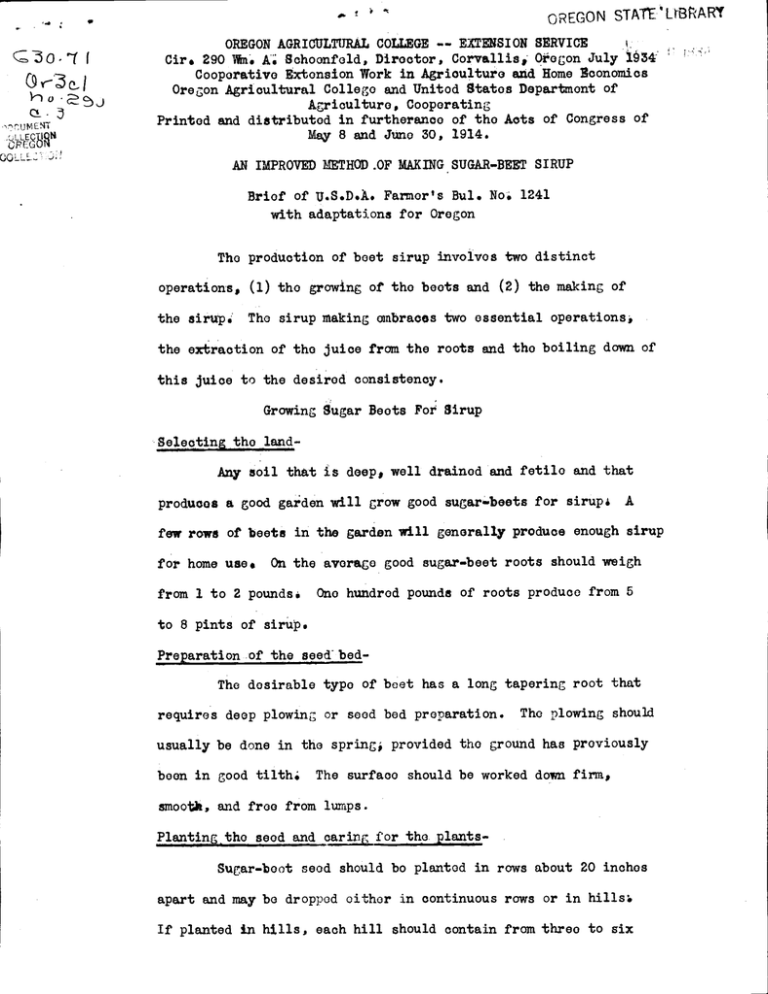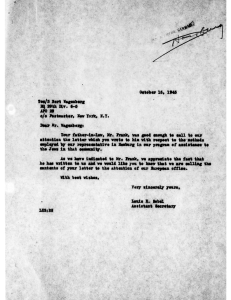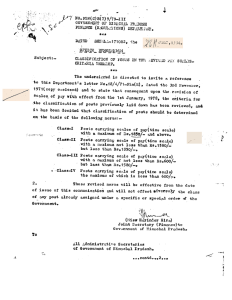co.- I 'LBARf OREGON STAT
advertisement

OREGON STAT 'LBARf co.- I o c. nu I1 EMI JLLEQTJQN CR CQLLE ON OREGON AGRICtTLTrJRAL COLLEGE -- EXTENSION SERVICE Cir, 290 Vin. A. Sohoonfeld, Director, Corvallis, Oregon July 1934 Cooperative Extension Work in Agrioulturo and Home Economics Oregon Agricultural College and Unitod States Dopartmont of Agriculture 000porating Printed and distributed in furtherance of tho Acts of Congress of May 8 and Juno 30, 1914. ! AM IMPROVED METHOD .OF MAKING SUGAR-BEET SIRUP Briof of U.S.D.A. Farmer's Bul. No. 1241 with adaptations for Oregon The production of boot sirup involvos two distinct operations, (1) tho growIng of the boots and (2) the making of tho sirup. The sirup making embraces two essential operations, the extraction of the juice from the roots and the boiling down of this juice to the desired consistenoy. Growing Sugar Boots For Sirup Seleotlng, tho land- Any soil that Is deep, well drained and f'etilo and that produces a good gazden will grow good sugar-boots for sirup A few rows of beetè in the garden will. generally produce enough sirup for home use. On the average good sugar..boot roots should weigh from 1 to 2 poundso Ono hundred pounds of roots produce from 5 to 8 pints of sirup. Preparation of the seed bedThe desirable type of boot has a long tapering root that requires deep plowing or seed bed preparation. The plowing should usually be done in the spring, provided the ground has previously boon in good tilth The surfaoo should be worked down firm, smooth, and free from lumps. Planting the seed and oaring for the plantsSugar-boot seod should be planted in rows about 20 inohos apart and may be dropped either in continuous rows or in hills'. If planted in hills, each hill should contain from three to six ' ' I seod balls, and tho hills should be about 12 to 14 inches apart; if planted in solid rows tho plants should be blocked. Blocking consists in cutting out a part of the plants with a hoe or other irnp].ornont, so that the remaining boots stand in tufts about 12 to 14 inchos apart. As soon as the fourth truo loaf appoars, they should bo thinnod to ono plant in each hill or tuft. If the boots arc irrigatod, care should be taken that vantor does not flood the ground around tho plants as flooding causos a crust to form and oxclude the air from the beet roots. The ground should be kept free of weeds. Harvesting and storing the root6- The proper stage of development for harvest will be indicated by a yellowish tinge of the foliage and by the faot that the beets when pulled leave the ground free from dirt. In no case should the beet roots be used for sirup making until they are mature. If the patch of beets is small, the beets may be looseñod by means of a spade or a spading fork and thrown into piles. The beets should then be topped by cutting them off squarely at the point where the lowest loaf was attached. heavy knife. The topping can best be done by means of a The roots can than be made into sirup at once, or they may be stored until a more convenient time. The boots may either be stored in the field by covering them with dirt to irovent wilting and freezing, or they may bo S stored in a collar. If the beets aro storod in a collor, they should be packed in sand or covered with dirt or sand to koep them from wilting. Making Sirup From Sugar Boots Preparing the roots (2) Tho first sop in making boot sirup consists in cleaning the roots and removing the top portion. The roots from which tho tops have boon reT1ovod at tho time of harvost aro soaked in water for a few minutos, in ordor to loosen the dirt, and aro scrubbed thoroughly, preferably with a brush having stiff bristles, in a tub of clean water or under a stream of clean Cool wator should be used for soaking and washing, as water. havo it restores the crispness of the roots that may possibly become slightly wilted; roots that have boon stored for somo time and havo become wilted to tho point of softness should not be used for making sirup. The crovn or top portion of tho cloanod beets should bo white out of f squarely at tho line botwoon tho groon and portions. If this line extends to a considerable point below of the tho lowest leaf scars, the cut may be riado at the line lowest loaf sears and the groon portions then removed by trimming. The roason for this further topping is that tho from the crown contains tho greater part of the salts taken soil in the process ef growth, and it is desirable to have the if sirup as free as posihlo from theso mineral salts, because present in too largo quantities -tasti.. -they ay impart an unpleasant Coloring riattor and othor materials in the groon portions causo a darker colored sirup and tend to impart an unpleasant taste and flavor. This is true also of the skin or pool, which should be removed. Extracting the uico- To ox-tract the juico containing tho sugar, the po'olod boots arc slicod and tho slices pormittod to fall dirootly into hot wator of sufficient doth to cover thorn and irovont access of air. Exposure of the peeled or sliced boots to the air results (3) S in the rapid darlconini; of the surfaces, which, if permitted to take piaoo to any extent, oausos a dark color in the sirup and tonds to impart an unpleasant flavor. The shoes should not be thicker than 1/16 inch and preferably muoh thinner, because the thinnor tho slicos the more rapidly and thoroughly An ordinary kraut cutter or some the jul30 will be oxtractod. type of vegetable-slicing machine is very satisfactory. The slices should be permitted to soak for about an hour at a tomporaturo of 174°to 180°F. The proper quantity of water is just sufficient to cover the slices and keep the air from them during the time of extraction, and hot wator may be added from time to time as the quantity of slices in the container inoroasos. The top slices may be hold under the surfaoo of tho water by moans of a plate or small S woodon rack. A 10-gallon container will hold the slices from 100 pounds of original (untoppod and unpeeled) boots end afford room for stirring than occasionally during the extraction. The extracting should be dono in cloan vessels made of tin, onomol ware, aluminum, crockery, or in a woodon container. Copper or iron vessels should not be usod oithor for the extracting or for the subsequent ovaporatinr to sirup. Containers othor than wood may cool at a somewhat greater rate, end it may be found advisable to maintain the proper toinporaturo by applying heat; in this case, a thin wooden rack should bo placed on the bottom of the vessel, to avoid scorching the bottom slices. After an hour the liquid is drained off and strained through cheosocloth or muslin. It is not nocossary to press the residual shoes. Heating the extractThe oxtraotod juice is heated under pressure in a oonainor (4) which may be soalod and is providod with a controlled valve for blowing off stcrnm, a thermometer, and a pressuro gage. Pressure cookers, such as are usod in many hemos in tho canning of vegetables, oto., have boon found vary satisfactory for this purposo. Tho covor having boon fastonod down, the extract is heated to a tomporaturo of 226°to 230°F. corresponding to a pressure of approximately 21 pounds per square inch and maintai.ned at this temperature for an hour, blowing off a considerable quantity of steen at aproximato1y 15-minute intervals. When heat is first applied, tho valve is loft open, to permit the escape of air, and it is closod as soon as tecm bogins to appear. At the end of the heating period the steam is permitted to blow off rapidly, and the extract, which should be a pale yellow color and entirely clear, is strained through cheesecloth or muslin, to remove tho slight quantity of coagulated imtoria1, and is then ready to be evaporatod to sirup. Ordinarily this troabnont romovos tho cbjootionablo "booty" odor and flavor. Evaporating to sirupTho extract is plaood in a kettlo made of tin, aluminum, or onamel ware end evaporated to sirup by boiling briskly. A shallow, flat pen is moro satisfactory, as it permits the extract to be reducod to sirup in a shorter time through more ra:ic3. evaporation and results in a lighter colored sirup. Tho ought quantity of scum that collects on the surface during the ovuporation should be constantly removed. Groat care must be taken tovnrd the end of the evaporation to avoid burning or scorching the sirup. The sirup niay be evaporated to any thic1oss desired, bt a sirup oontaining 70 por cent total solids is suggested as (5) I -. a suitable for table uso. This concentration is obtained whon tho sirup boils at 224° F. at sea level or 220°F. at an elevation of 2000 fiot. Storing tho sirup- The SITUP should be stored in bottles, jars, or cans that have boon cleaned and thon thoroughly storilizod with boiling water or with stoorn. The sirup should be placed in the containers while boiling hot and the containers oaled at onoe in an air-tight manner, Character of the Sirup Sirups made by the process here described were of a light to dark-amber color and were free from the unpleasant odor and flavor which have frequently boon found in sirups produced by direct evaporation of tho oxtract, without tho preliminary heating under pressure, and which have usually been found in sirups mado from untrimmed and unpeeled boots. 0





